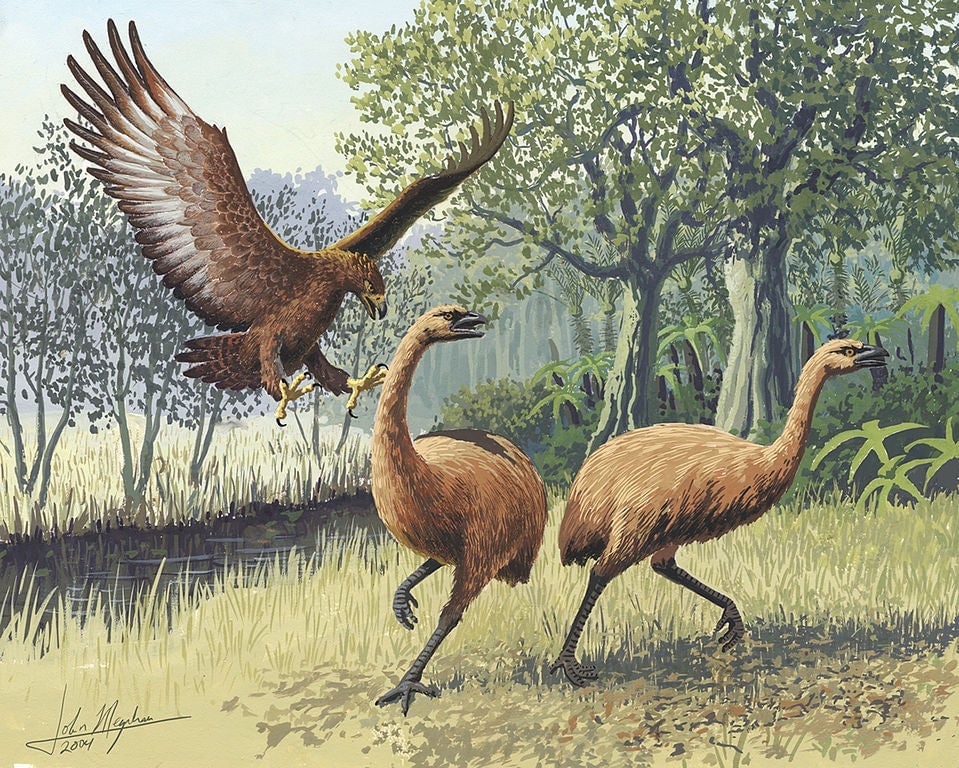A New Zealand man found 12-million-year-old footprints left by an extinct 500-lb bird
When New Zealand’s first settlers arrived in the country in around 1300, they found a series of islands with lots of seafood, not much by way of edible plant life, and some of the most extraordinary flightless birds the world had ever seen.


When New Zealand’s first settlers arrived in the country in around 1300, they found a series of islands with lots of seafood, not much by way of edible plant life, and some of the most extraordinary flightless birds the world had ever seen.
Over millions of years, New Zealand had developed a unique ecosystem. It has almost no native mammals and is instead home to a vibrant array of avian life—at most recent count, some 378 species, many of which cannot be found anywhere else in the world. Without the risk of mammal predators, a striking number are shockingly defenseless, and spend their lives trotting sweetly—and vulnerably—along the forest floor.
Moa should not have been at risk. These enormous birds stood twice the height of an adult man, and weighed nearly three times as much. They had few natural predators, beyond the now-extinct Haast’s eagle, with their size weapon enough against almost anything. But they were slow, unwieldy, and possibly quite delicious. With few alternative sources of food, New Zealand’s newly-arrived Maori people quickly grew accustomed to killing and eating them. Within a century, the birds were gone forever.

Earlier this year, however, a New Zealand tractor driver had an exceptional brush with some of these long-dead giants. While taking his dogs for a swim in a river in a remote area of New Zealand’s South Island, Michael Johnston noticed some unusual markings in the clay, and contacted the local Otago museum. Days later, museum experts used snorkels and underwater cameras to find seven moa footprints preserved in the river’s hard clay, beneath about three feet (one metre) of water. They are the first tracks from the bird ever found on the island, and believed to be as much as 12 million years old.
Recent wet weather in the area seems to have eroded the bank, exposing the clay slab below, with its seven footprints. Each is roughly a square foot (30 cm) in size. Museum experts are now extracting the footprints from the clay, with a view to eventually making them available for researchers to study.